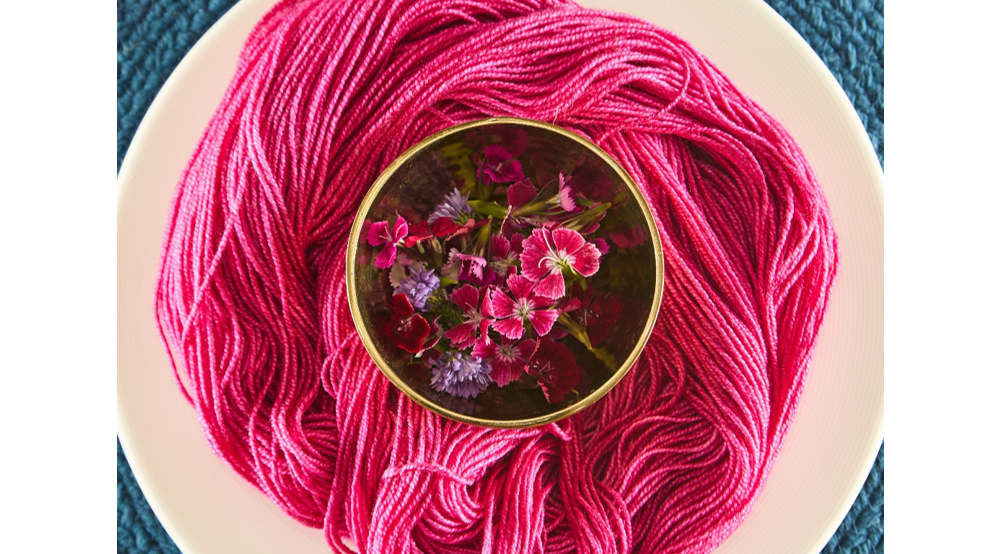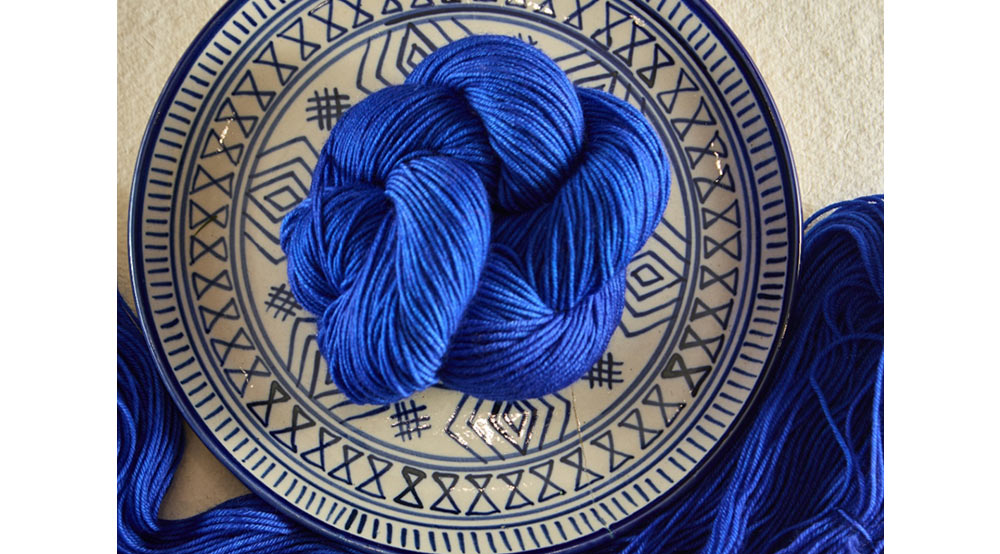DK vs. Worsted Weight Yarn: The Complete Guide
- Blog Views : 23305
- Symfonie Yarns
- 19Jul, 2024

Yarn weight systems categorize yarns based on thickness. So, they are available in every size, from lace (hair-like) to jumbo (rope-like), of which DK and worsted-weight fall almost in the middle. Both yarn weights are the most popular options among knitters, crocheters, and every yarn artist, and they are well-known for their versatility and wide range of applications. In this blog, we'll explore DK and worsted-weight yarn, their differences, and uses, equipping you to make informed choices for your next project.
Understanding Yarn Weight Standards
Yarn weight is a fundamental concept that every knitter or crocheter must understand. It's the first thing you must know and understand if you are trying to be a yarn artist. Yarn weight does not refer to the actual weight but the thickness of the yarn strand. Why is it important? Well, it reveals the stitch definition: will it drape or be dense; will it be lightweight or chunky? Next, it dictates the knitting needle or crochet hook size. And ultimately, the weight decides your project's finished look. Refer to our guide on yarn weight and sizes to know more.
DK Yarn

DK yarn, also known as Double Knitting yarn, is popular among knitters and crocheters for almost every type of project. The versatile champion creates a medium-weight and structured fabric. It suits basic stitches, intricate lace patterns, textured stitches, colorwork designs, and cables.
The yarn typically works with knitting needles in sizes US 3 - 7 (3.25 – 3.75 mm) and crochet hooks in sizes F (3.75mm)—G (4.50mm). The yarn gauge is generally 10cm (4") - 22-25 stitches / 28-32 rows. The count varies depending on the yarn brand and specific fiber content. Merino DK yarn is a little different than merino-silk yarn in the same weight.
DK yarn excels in creating a variety of garments and accessories. It works beautifully for all-season sweaters, cardigans, hats, scarves, mittens, baby blankets, and even socks. By using a bigger needle size than recommended, you can work on almost every project, including lace patterns.
Worsted Weight Yarn

Worsted-weight yarn is a favorite among yarn artists seeking easy and quick projects. It sits comfortably in the middle of the yarn weight category, leaning towards slightly bulky yarns. It offers a balance between warmth, drape, and stitch definition. It is ideal for projects requiring warmth and structure, especially winter garments and accessories. Beginner knitters prefer the yarn for its quick stitch-making.
It is typically knitted or crocheted with needles or hooks in the size range of US 6 - 9 (4 - 5.5 mm). The yarn gauge is generally per 10cm (4") 16-22 stitches. However, due to its slightly thicker nature, it might knit up with slightly fewer stitches per inch compared to DK yarn on the same size needle.
Worsted-weight yarn is incredibly versatile and can be used for an extensive range of projects. Think of scarves, sweaters, cardigans, hats, mittens, afghans, blankets, and home decor. A merino wool worsted-weight yarn is perhaps the best choice for winter garments and accessories that you would love to snuggle into.
DK vs. Worsted
DK and worsted-weight yarns are popular among yarn crafters, but some differences can impact your project.
Here's when the choice between DK and worsted weight truly matters:
Project Requirements: DK yarn works for a lighter and breathable fabric, while worsted-weight yarn provides more warmth and structure. So, when a project requires warmth, you choose worsted; when it requires lightness, choose DK.
Stitch Definition: DK yarn's finer gauge works for crisp definition for intricate lace stitch patterns or cables. However, the worsted-weight yarn showcases bolder cable patterns and textured stitches.
Personal Preference: For projects such as shawls or scarves, some yarn crafters prefer DK yarn, while others prefer worsted-weight yarn. When given the choice, it depends on the knitters and crocheters.
Making Informed Choices: Tips for Choosing the Right Yarn Weight
Here are some pointers to help you navigate the world of yarn weight.
Gauge – Always start a knitting or crocheting project with any yarn with a gauge swatch. With the yarn chosen and the matching knitting needle or crochet hook size following the stitch pattern for the project, make a 6-10 inches square fabric. Block it and then calculate the gauge. Gauge is basically a count of stitches in an inch of knitted or crocheted fabric. The gauge will differ in DK and worsted weight even if you work with the same needle or hook size.
Yardage—It is important to understand that one skein, say, 100gm of DK yarn, is different from the worsted-weight yarn. A knitting or crocheting project made with one yarn may not be enough for the other. If you are working on a scarf, the yardage may not seem a big problem, but for projects such as a sweater or hat, this minor difference may lead to running out of yarn or having too much left.
With this guide, you have completed information about DK and worsted yarn weight. Make informed choices for all your knitting and crochet projects. With Symfonie Yarns, explore hand-dyed yarns in fingering, DK, and worsted-weight. Explore over 100 semisolid and variegated hues in four exclusive ranges – Viva, Terra, Luna, and Bella. Viva and Luna are DK- weight yarns; while the first is an extrafine merino wool, the latter is a merino-silk blend that shimmers in the light. Terra is a fingering-weight yarn, a merino-polyamide blend that is truly an extraordinary sock yarn. Bella is an extrafine merino wool yarn in worsted weight. Whatever your project, create a masterpiece with Symfonie!
-
- 15 Dec,2025
-
- 08 Dec,2025
-
- 02 Dec,2025
-
- 27 Nov,2025
-
- 24 Nov,2025
-
- 19 Nov,2025
Copyright © Symfonie Yarns 2025 - all rights reserved | RSS Feed
